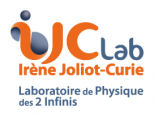The Advanced Virgo detector has contributed with its data to the rapid growth of the number of detected gravitational-wave (GW) signals in the past few years, alongside the two Advanced LIGO instruments. First during the last month of the Observation Run 2 (O2) in August 2017 (with, most notably, the compact binary mergers GW170814 and GW170817), and then during the full Observation Run 3 (O3): an 11-months data taking period, between April 2019 and March 2020, that led to the addition of about 80 events to the catalog of transient GW sources maintained by LIGO, Virgo and now KAGRA. These discoveries and the manifold exploitation of the detected waveforms require an accurate characterization of the quality of the data, such as continuous study and monitoring of the detector noise sources. These activities, collectively named {\em detector characterization and data quality} or {\em DetChar}, span the whole workflow of the Virgo data, from the instrument front-end hardware to the final analyses. They are described in details in the following article, with a focus on the results achieved by the Virgo DetChar group during the O3 run. Concurrently, a companion article describes the tools that have been used by the Virgo DetChar group to perform this work.










